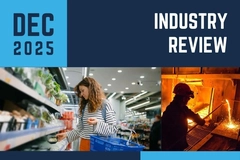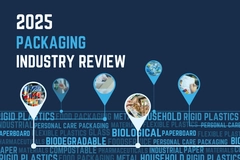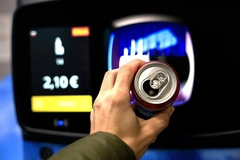US researchers develop self-monitored smart packaging for real-time transport data to minimize food spoilage

28 Aug 2023 --- Researchers at Case Western Reserve University, Ohio, are developing a self-powered integrated smart packaging system to monitor the status and quality of packaged products throughout the supply chain for an extended period. This solution could reduce food waste and ensure a complete record of logistics history, they say.
The researchers came up with a desiccant-based triboelectric nanogenerator to harvest energy from vibration during the transportation of packaged products and use it as a power source for an intelligent packaging system.
Desiccants – the small packets of silica gel pellets found in packaging to absorb moisture – form the central feature of the system. The team designed a paperboard-based honeycomb frame to store the desiccant materials.
The self-powered monitoring device operates in a contact-separation mode based on triboelectrification between the desiccants and polytetrafluoroethylene films. It consists of flexible sensors and an energy harvester that converts mechanical energy into electricity.
The energy is then used for a real-time monitoring system that could provide digital data about the packaged goods’ temperature, moisture and spoilage conditions, particularly for food.  The researchers are currently developing a functioning prototype.
The researchers are currently developing a functioning prototype.
Next-generation packaging
The team’s research was recently published online in the journal Nano Energy.
“If this works well, everyone stands to benefit,” says Chanyong (Chase) Cao, an assistant professor of mechanical and aerospace engineering and electrical, computer and systems engineering at Case Western Reserve, who leads the research team.
“About one-third of all food produced for human consumption gets lost or wasted – roughly 1.3 billion metric tons yearly. Our solution could significantly reduce spoilage, cut costs and ensure food safety.”
The researchers state that the current portable batteries might not meet the needs of the next-generation smart packaging as they “have a limited lifetime, are heavy and may cause environmental pollution after use.”
The university shares that the project is aligned with the World Bank’s proposed solutions to food waste, which include better technology for storing and keeping perishables fresh in the supply chain.
Harnessing digitalization
Cao and his team are assembling a functioning prototype and hope to scale up in the next five years. The current stage focuses on detecting and preventing food spoilage, but he believes the technology could also prove beneficial in transporting vaccines.
“With the rise of the Internet of Things and evolving consumer preferences, traditional packaging that solely stores and protects products is no longer sufficient,” the researchers write.
“Smart packaging, which senses, detects and records the status of the packaged product, is an innovative solution that provides information about the quality and safety of goods during production, storage, transportation and consumption.”
Packaging Insights recently spoke to Robert Hughes, CEO at Scalize, about digital action against transport costs and optimizing packaging value chain efficiency.
By Radhika Sikaria










